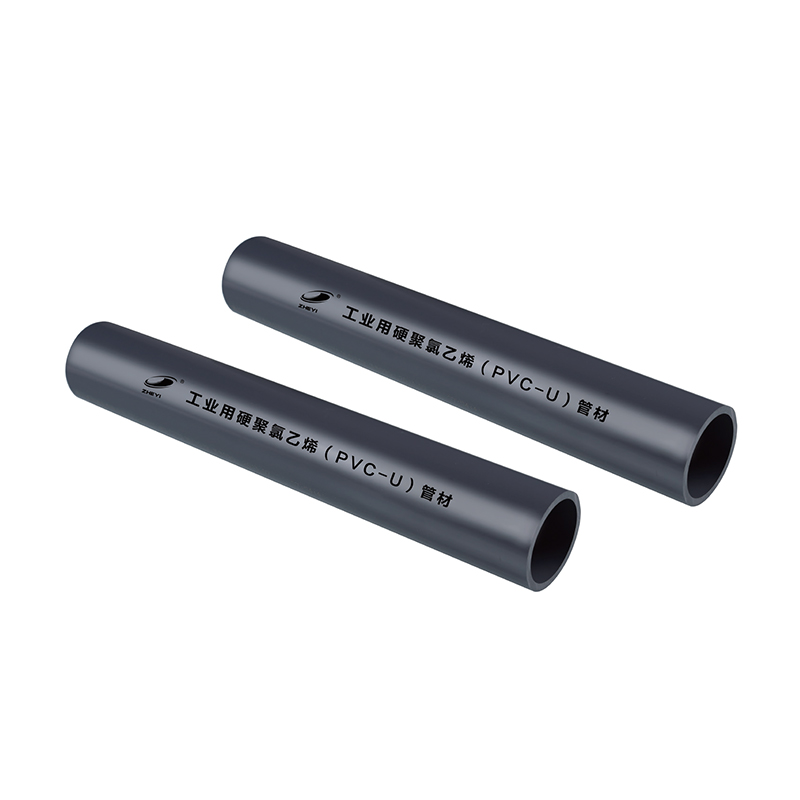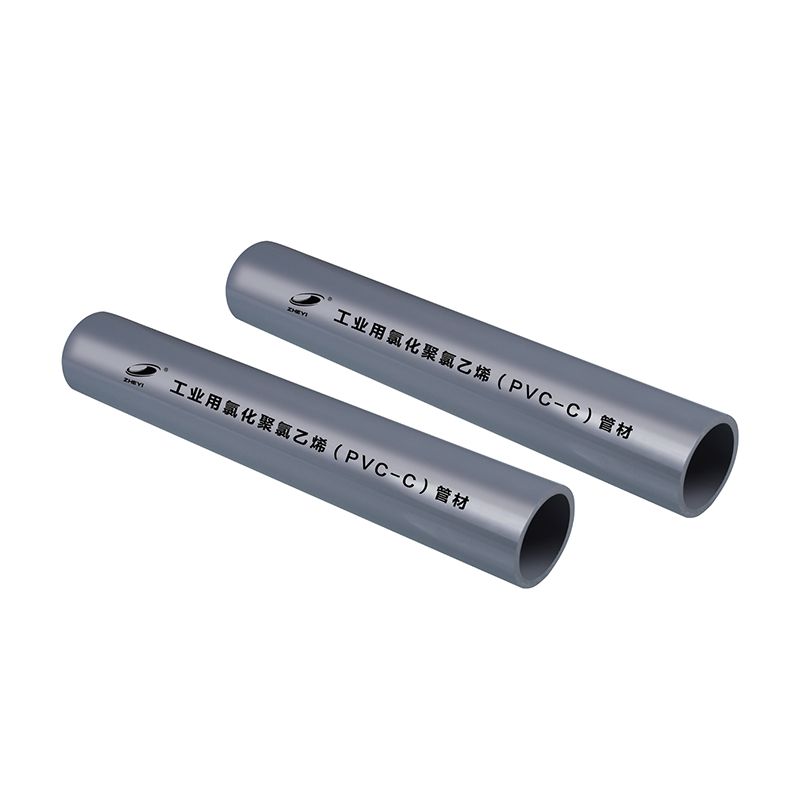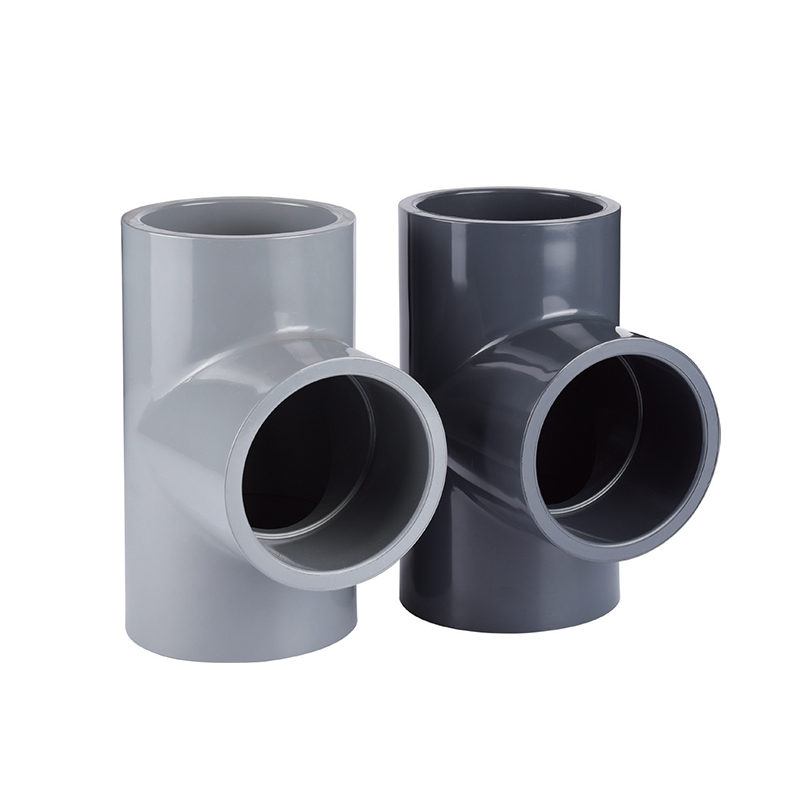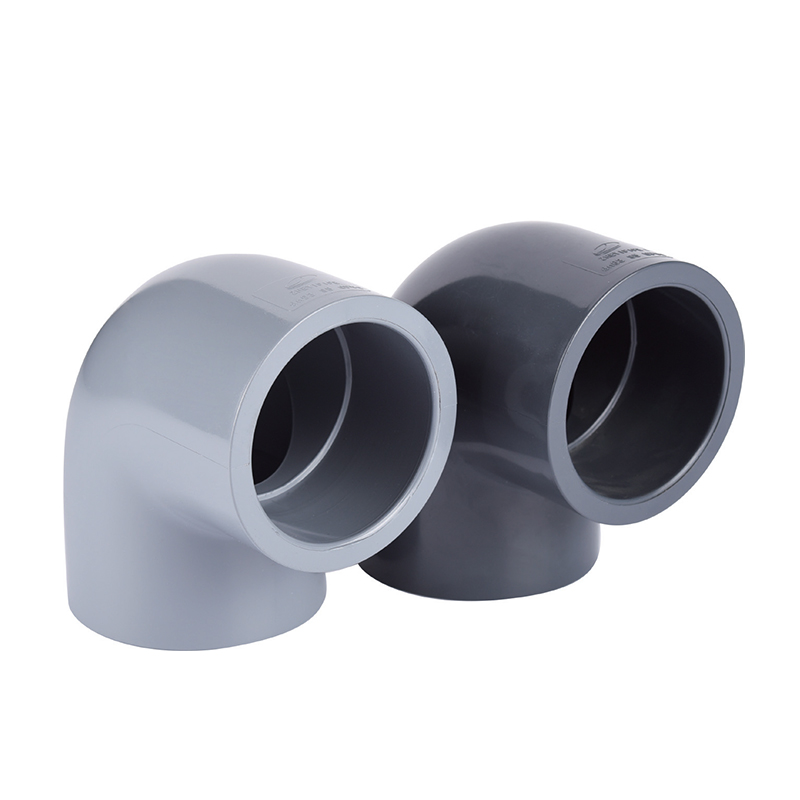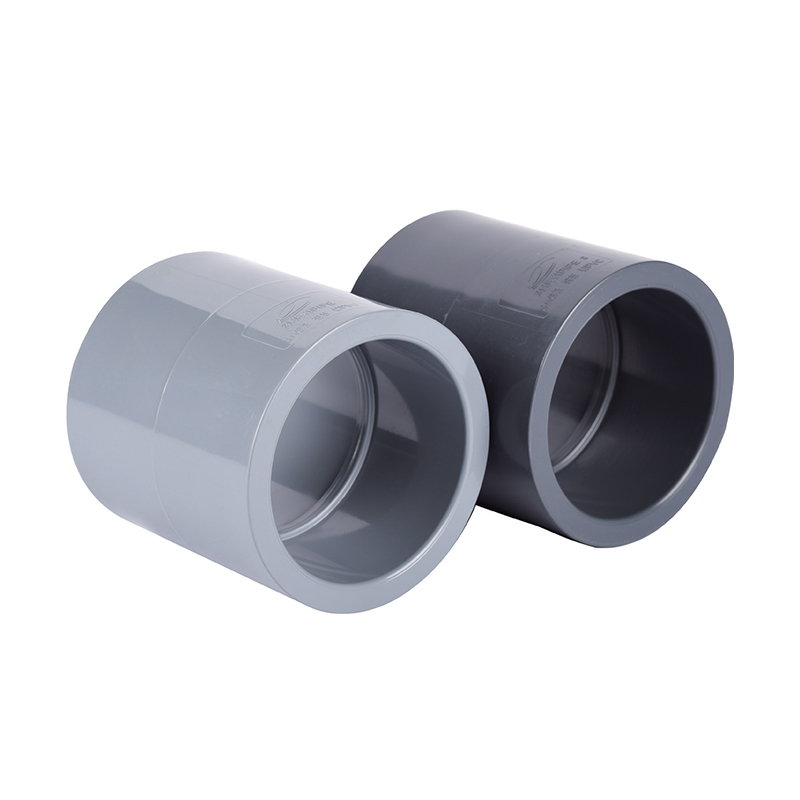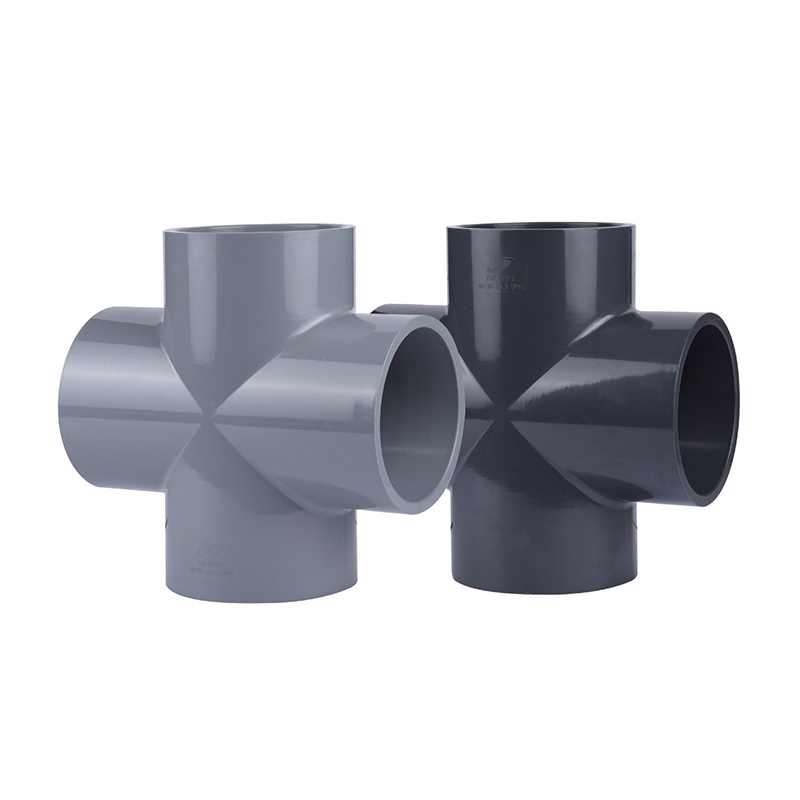The manufacturing of lithium batteries involves highly corrosive electrolytes and ultra-pure chemical processes, demanding exceptional material compatibility and contamination control. Chemical/Lithium UPVC/CPVC Valve (DIN/ANSI) solutions have emerged as critical components, offering superior corrosion resistance and purity maintenance compared to metallic alternatives. This article explores the essential technical requirements, material selection criteria, and industry standards governing plastic valve implementation in lithium battery production environments, addressing common challenges and optimization strategies for maximizing production efficiency and product quality.

SCH8O/DIN UPVC/CPVC Swing Check Valve
Material Compatibility: CPVC vs. UPVC for Lithium Battery Chemical Processes
Selecting appropriate valve materials requires understanding their chemical resistance to lithium battery production substances. Chlorinated Polyvinyl Chloride (CPVC) and Unplasticized Polyvinyl Chloride (UPVC) offer distinct advantages depending on specific application parameters, including temperature, concentration, and fluid composition. The electrolyte solutions containing lithium salts (LiPF₆, LiBOB), organic carbonates (ethylene carbonate, dimethyl carbonate), and various additives present unique challenges that demand careful material evaluation.
- Temperature Resistance: CPVC maintains structural integrity at higher temperatures (up to 200°F/93°C) compared to UPVC (140°F/60°C), making it suitable for heated processes.
- Chemical Resistance: Both materials resist hydrochloric acid, sulfuric acid, and sodium hydroxide, but CPVC offers enhanced performance against certain organic solvents used in electrolyte formulations.
- Mechanical Properties: UPVC provides excellent rigidity at room temperature, while CPVC maintains better impact strength at elevated temperatures.
- Purity Considerations: Both materials exhibit low extractable levels, minimizing contamination risks in sensitive battery-grade chemicals.
| Material Property |
CPVC |
UPVC |
| Maximum Continuous Service Temperature |
200°F (93°C) |
140°F (60°C) |
| Chemical Resistance to LiPF₆ Electrolytes |
Excellent |
Good to Excellent |
| Pressure Rating at 73°F (23°C) |
150 psi |
150 psi |
| Linear Expansion Coefficient |
3.8 × 10⁻⁵ in/in/°F |
3.0 × 10⁻⁵ in/in/°F |
| Cost Considerations |
Higher |
More Economical |
Preventing Electrolyte Contamination with Specialized Plastic Valves
Maintaining electrolyte purity represents perhaps the most critical consideration in lithium battery manufacturing. Even minute contamination can compromise battery performance, cycle life, and safety. plastic valves for lithium battery electrolyte systems must address multiple contamination vectors, including leachables, particulates, microbial growth, and metallic ion contamination. Proper material selection, surface finishing, and system design work in concert to preserve fluid purity throughout production.
- Surface Smoothness: Precision-molded valves with Ra < 0.8 μm surface finish minimize particulate adhesion and facilitate cleaning.
- Extractables Testing: Comprehensive validation ensuring valve materials don't leach plasticizers, stabilizers, or other compounds into electrolytes.
- Non-Metallic Construction: Elimination of metallic components prevents introduction of catalytic metal ions that degrade electrolyte performance.
- Cleanroom Manufacturing: Valves produced in controlled environments with appropriate packaging to maintain cleanliness until installation.
Design Features for Contamination Control
Beyond material selection, specific design implementations significantly impact contamination prevention. Diaphragm valves with full-bore designs eliminate dead legs where contaminants could accumulate, while specialized stem designs prevent lubricant migration into the process stream. The integration of these features creates a comprehensive approach to maintaining the stringent purity standards required in lithium battery production.
- Diaphragm isolation of actuation mechanisms from process fluids
- Self-draining configurations to prevent fluid retention
- Minimized internal cavities and crevices
- Validation of clean-in-place (CIP) and steam-in-place (SIP) capabilities
Meeting DIN and ANSI Standards in Lithium Production Valve Specifications
Standardization ensures compatibility, reliability, and safety across lithium battery manufacturing facilities. DIN/ANSI standard plastic valves for lithium industry provide established frameworks for dimensions, pressure ratings, material specifications, and testing protocols. Understanding these standards helps engineers select appropriate components and design systems that meet international requirements while facilitating maintenance and parts replacement.
- DIN Standards: European standards emphasizing metric dimensions, specific material classifications, and comprehensive testing requirements.
- ANSI Standards: North American standards focusing on interchangeability, pressure-temperature ratings, and installation requirements.
- Material Certifications: Compliance with standards such as DIN 8061/8062 for UPVC and ASTM F441 for CPVC ensures material consistency.
- Dimension Standards: Conformance to DIN 11866/11867 or ANSI B16.15 ensures proper fitting compatibility and seal performance.
| Standard |
Scope |
Relevance to Lithium Production |
| DIN 11866-2 |
Plastic valves - dimensions and materials |
Ensures compatibility with European equipment |
| ANSI/ASME B16.15 |
Cast copper alloy threaded fittings |
Standardizes end connections for North American markets |
| DIN 8061 |
UPVC piping components - dimensions |
Provides material and dimensional specifications |
| ANSI/NSF 61 |
Drinking water system components |
Indicates material safety for ultrapure water applications |
Pressure and Temperature Ratings for Lithium Battery Plant Valves
Lithium battery manufacturing involves multiple processes with varying pressure and temperature requirements. pressure and temperature ratings for lithium plant valves must accommodate everything from low-pressure ultrapure water distribution to moderate-pressure chemical dosing systems. Understanding derating factors at elevated temperatures, pressure surge capabilities, and long-term performance under cyclic conditions ensures reliable valve selection for specific application requirements.
- Derating Considerations: Pressure capabilities decrease as temperature increases, with different derating curves for CPVC versus UPVC.
- Cyclic Fatigue Resistance: Valves must withstand repeated pressure cycles without developing cracks or leaks.
- Thermal Expansion Management: System design must accommodate different expansion rates between valves and piping.
- Vacuum Service Capability: Certain processes, particularly drying and purification steps, require valves capable of maintaining seal under vacuum conditions.
Application-Specific Requirements
Different stages of lithium battery production present unique pressure and temperature challenges. Electrolyte filling systems typically operate at near-ambient conditions but demand exceptional purity, while electrode slurry preparation might involve moderate temperatures and abrasive media. Coating and calendaring processes often utilize heated fluids, requiring valves that maintain mechanical properties at elevated temperatures without introducing contamination.
- Electrolyte handling: Ambient temperature, low pressure, ultra-high purity
- Slurry systems: Ambient to moderate temperature, moderate pressure, abrasive media
- Heating/cooling circuits: Elevated temperatures, moderate pressure, thermal cycling
- Ultrapure water: Ambient temperature, low to moderate pressure, bacterial control
Installation and Maintenance Best Practices for Industrial Plastic Valves
Proper installation and maintenance significantly impact valve performance, service life, and system reliability. industrial plastic valve installation maintenance lithium plants requires specific techniques differing from metallic valve practices. From proper support spacing to appropriate torque values and chemical compatibility of sealants, attention to installation details prevents premature failures and maintains system integrity.
- Support Spacing: Plastic piping requires more frequent supports than metallic systems to prevent sag-induced stress on valve bodies.
- Thermal Expansion Accommodation: Proper use of expansion loops, offsets, or bellows prevents stress accumulation at valve connections.
- Torque Limitations: Applying excessive torque during assembly can create stress concentrations leading to premature failure.
- Chemical Compatibility of Ancillaries: Gaskets, sealants, and lubricants must be compatible with both the valve material and process chemicals.
| Maintenance Activity |
Frequency |
Key Considerations |
| Visual Inspection |
Weekly |
Check for discoloration, surface cracks, or signs of stress |
| Operational Testing |
Monthly |
Verify smooth operation, complete closure, and proper positioning |
| Seal Integrity Verification |
Quarterly |
Pressure hold tests or leak detection methods |
| Preventative Parts Replacement |
Annually |
Replace diaphragms, seals, and other wear components |
Troubleshooting Common Issues
Even with proper installation, valves may develop issues requiring troubleshooting. Leakage at stem seals often indicates improper adjustment or worn components, while difficulty in operation might suggest internal contamination or material degradation. Understanding failure modes and their remedies helps maintenance personnel quickly restore system functionality while identifying root causes to prevent recurrence.
- Stem leakage: Adjust packing gland or replace stem seals
- Stiff operation: Inspect for internal contamination or corrosion
- Incomplete shut-off: Check for seat damage or debris accumulation
- Cracking: Evaluate for improper support, thermal stress, or chemical attack
FAQ
What makes CPVC valves preferable to UPVC in certain lithium battery production applications?
CPVC offers superior temperature resistance, maintaining mechanical properties and pressure ratings at elevated temperatures common in certain lithium battery manufacturing processes. While both materials provide excellent corrosion resistance to most chemicals used in electrolyte production, CPVC performs better with some organic solvents and at higher operating temperatures. The selection between CPVC and UPVC ultimately depends on specific process conditions, with CPVC typically specified for applications exceeding 140°F (60°C) or involving certain aggressive organic compounds at elevated temperatures.
How do plastic valves prevent metallic contamination in lithium-ion battery electrolyte systems?
Plastic valves completely eliminate metallic wetted components, preventing the introduction of iron, copper, nickel, or other metal ions that can catalyze electrolyte decomposition and degrade battery performance. High-purity formulations of CPVC and UPVC materials minimize extractables, while specialized manufacturing processes ensure surface finishes that resist particulate shedding. This comprehensive approach to contamination control makes plastic valves for lithium battery electrolyte systems essential for maintaining electrolyte purity and ensuring final battery product quality and safety.
What certification standards should plastic valves meet for use in lithium battery manufacturing?
Beyond standard DIN/ANSI standard plastic valves for lithium industry compliance, valves should have material certifications demonstrating suitability for high-purity applications, such as USP Class VI, FDA compliance, or relevant regional standards for materials in contact with sensitive chemicals. Additionally, certificates of conformity documenting composition, extraction testing results, and cleanroom manufacturing conditions provide assurance of valve suitability for critical lithium battery production applications where even minor contamination can impact product performance.
How do pressure requirements differ across various stages of lithium battery production?
Lithium battery manufacturing involves diverse pressure requirements, from low-pressure ultrapure water distribution (typically 30-80 psi) to moderate-pressure chemical dosing systems (50-150 psi). Understanding these varying pressure and temperature ratings for lithium plant valves ensures appropriate valve selection for each application. Electrolyte handling typically occurs at low pressures to minimize leakage risks, while slurry transport may require moderate pressures to maintain suspension. Cooling systems often operate at higher pressures, particularly in closed-loop configurations serving multiple process areas.
What are the most critical maintenance considerations for plastic valves in lithium plants?
Effective industrial plastic valve installation maintenance lithium plants focuses on preventive measures, including regular inspection for stress cracking, verification of seal integrity, and operational testing. Maintenance schedules should account for valve type, service conditions, and criticality to production. Diaphragm valves require periodic diaphragm replacement, while ball valves need stem seal inspection and lubrication with compatible materials. Documented maintenance history helps identify wear patterns and optimize replacement intervals, minimizing unplanned downtime in continuous production environments.
About Our Expertise in Lithium Battery Production Valves
ZHEYI Group was founded in 2007, specializing in R&D, manufacturing, selling, and service of industrial pipelines of CPVC, and UPVC. Our group maintains facilities in both East China and Central China, with Zheyi Pipeline (Wuhan) Co., Ltd. strategically located in Xiaogan Linkong Economic Park adjacent to Wuhan Tianhe Airport. As a national high-tech enterprise with numerous certifications including ISO 9001, ISO 14001, and ISO 45001, we hold over 50 independent intellectual property rights. Our products are widely used in the lithium industry for acid and alkali liquid, ultra-pure water, and electronic grade water pipeline transportation, serving customers globally while adhering to core values of "Excellence, Integrity, Win-win cooperation and Sustainable development."


 +86-15258772971
+86-15258772971
 dinys009@163.com
dinys009@163.com

 English
English 한국어
한국어 Español
Español عربى
عربى


